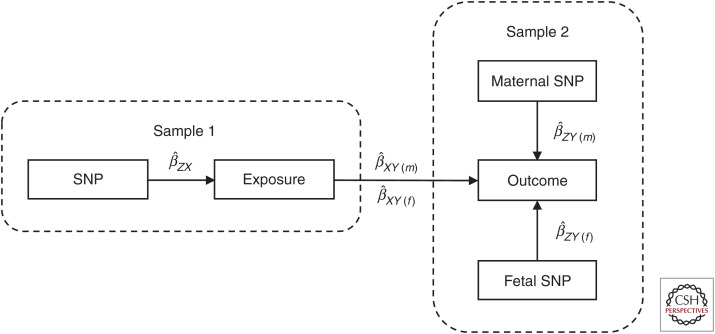Figure 3.
Two-sample Mendelian randomization study testing the causal effect of a maternal exposure on an offspring outcome. Estimates of the single-nucleotide polymorphism (SNP)-exposure association are calculated in the first sample of unrelated individuals. The association between these same SNPs and the offspring outcome is then estimated in the second sample of individuals, except in this case, the genetic association is partitioned into maternal and offspring genetic effects on the outcome (see Fig. 4 for how these can be estimated using structural equation modeling). These estimates are then combined to yield estimates of the causal effect of the maternal exposure on the offspring outcome , and the causal effect of the exposure in the offspring on their own outcome . It is important to realize that under this model, the same SNP-exposure association is being used to index both maternal and fetal exposures. While this may be appropriate in some circumstances (e.g., examining the effect of maternal and offspring IQ on offspring obesity in teenagers), it may not make sense for other exposures of interest (e.g., SNPs that index maternal smoking cannot index fetal smoking in utero). Investigators therefore need to think carefully about whether estimates of the offspring causal effect make sense in the particular context in which they are derived.

